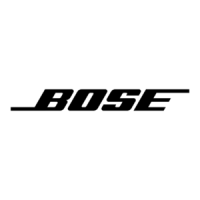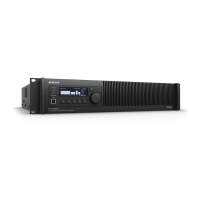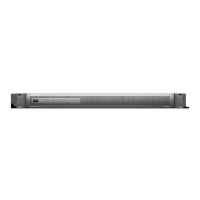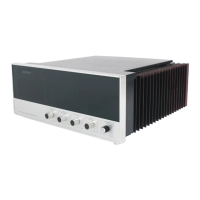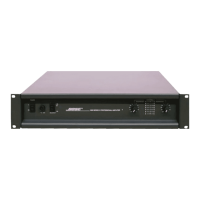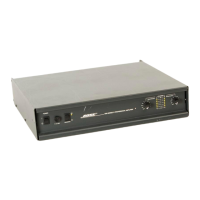8
Output Power ConfIguratIons
The amplifier allows output power to be allocated between 2 to 8 (or 4, depending on model)
output channels and allows for both low-impedance and high-impedance (70V and 100V) loud-
speaker loads. To illustrate the possible output configurations, the menu display for CH 1 output
configurations are presented below:
Note: For I-Share and Quad Bridge Modes, changing the output configuration will automatically
place the unit in Standby Mode to allow different loudspeaker cable connections to the rear-panel
output terminal blocks. Additionally, the menu displays are context-sensitive; not all combinations
are possible for all channels. The front-panel output meters automatically change display width
to identify the various output configurations during normal operation. The 4 possible output
configuration meter displays are presented below (note the mixed mode display has many other
possible combinations):
Front-Panel Output Meters by Configuration
AC Mains Outlet Requirements
The PowerMatch
®
amplifiers feature a highly-efficient, universal switch-mode power supply with
Power Factor Correction and can operate with AC Mains line voltages from 100 to 240 volts at
50/60 Hz. With typical music program material, these amplifiers will provide full rated power from
a single 20-amp, 120V (common in USA) or 100V (Japan) AC mains outlet, or single 16-amp,
230V (common in Europe) mains outlet (PM8500(N)) or a single 15-amp, 120V or 100V AC
mains outlet or single 10-amp 230V mains outlet (PM8250(N), PM4500(N) and PM4250(N).
Note: The PM8500 requires a dedicated 20 Amp AC line (for 100V or 120V units) or 16 Amp (for
230V units) to be able to operate properly during test.
Mono (8 x 500 W) V-Bridge or I-Share (4 x 1000 W
Quad Bridge (2 x 2000 W) Mixed Mode (varies by configuration)
CH 1Menu Display Channels Affected Power Rating
Intended Loudspeaker
Load
Max Channels
MONO CH 1 500W @ 4Ω 2 to 16 ohms 8
CH1+2 V-Bridge (Low-Z) CH 1 and CH 2 1000W @ 8Ω 4 to 8 ohms 4
CH1 +2 V -B ridge (7 0V ) CH 1 a nd CH 2 8 00 W @ 70V 7 0- V “c on stan t volta ge ” lines 4
CH1+2 V-Bridge (100V) CH 1 and CH 2 1000W @ 100V 100-V “constant voltage” lines 4
CH1+2 I-Share (Low-Z) CH 1 and CH 2 1000W @ 2Ω 2 ohms 4
CH1+2+3+4 Quad (Low-Z) CH 1, CH 2, CH 3, CH 4 2000W @ 4Ω 4 ohms 2
CH1 +2+3+4 Qu ad ( 70 V) CH 1 , CH 2 , CH 3, CH 4 1 60 0W @ 7 0V 7 0- V “c on stan t volta ge ” lines 2
CH1+2+3+4 Quad (100V) CH 1, CH 2, CH 3, CH 4 2000W @ 100V 100-V “constant voltage” lines 2

